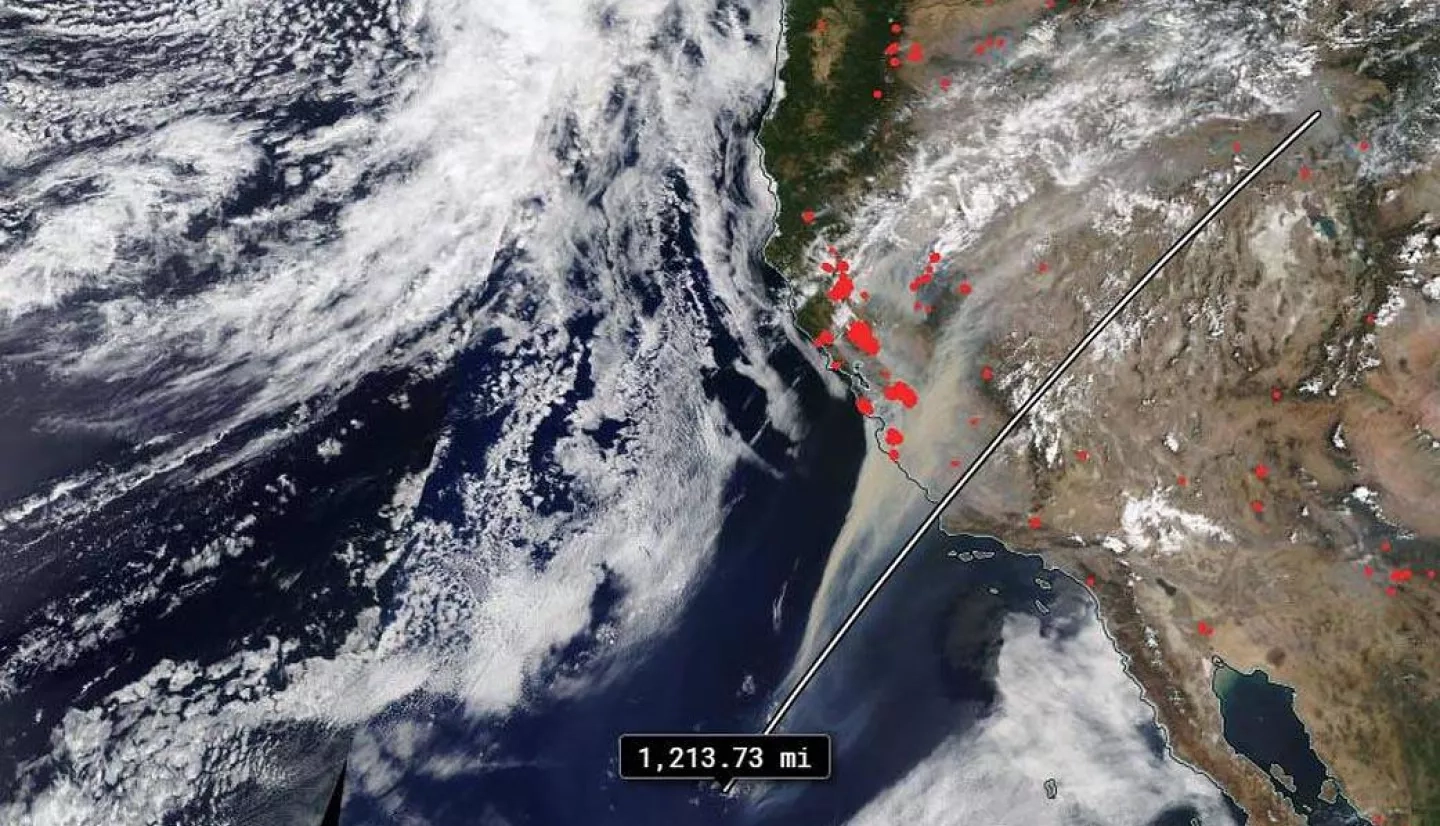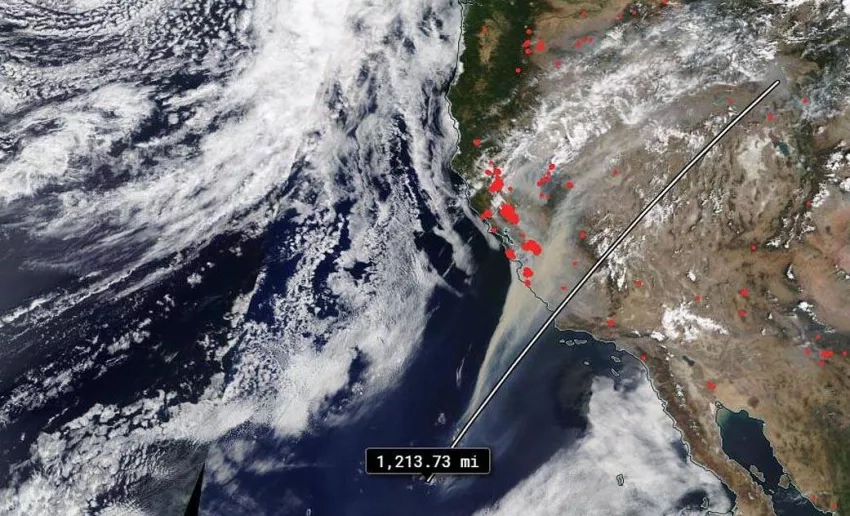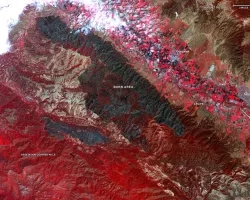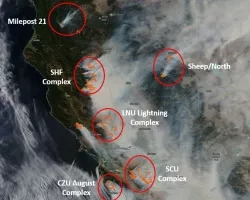Since August 16th, 2020, California has been experiencing major, sustained wildfires across much of the state. These fires were caused by a large number of lightning strikes in the region, and have been exacerbated by a historic heatwave. Smoke from the fires has traveled across much of the United States, impacting the air quality in areas from California all the way to Minnesota and Nebraska. As of August 27th, media reports indicate that roughly 1.3 million acres have burned and 175,000 people have been evacuated from their homes due to the fires.
The NASA Earth Applied Sciences Disasters Program has activated to determine what NASA resources and capabilities may be available to support risk management and recovery efforts for the California fires. Coordinators from the Disasters Program are in contact with stakeholders from the California State Guard, who have requested products to aid damage assessment, quantifying infrastructure and residential risk, fire propagation modeling, and air quality monitoring/modeling. The Program is also supporting stakeholders from the California Geological Survey, FEMA Region IX, California State Geographic Information Officer, California Office of Emergency Services (CalOES), and the California Department of Forestry and Fire Protection (CAL FIRE).
As part of the activation, an Air Quality and Fire Propagation group has been established to focus on those two topics. The group is working directly with the NASA Health and Air Quality Applied Sciences Team (HAQAST) and is providing CALIPSO, MISR, and Aerosol Optical Depth (AOD) information to HAQAST and to the NASA Disasters Mapping Portal. In addition, the ROSES A.37 research project "Coupled Interactive Forecasting of Weather, Fire Behavior, and Smoke Impact for Improved Wildland Fire Decision Making" is providing fire detection, smoke modeling, and fire propagation modeling.



